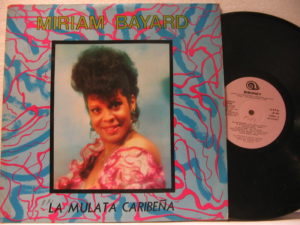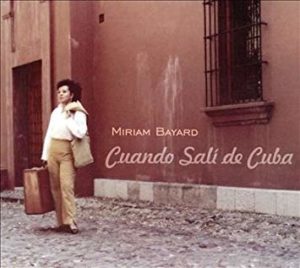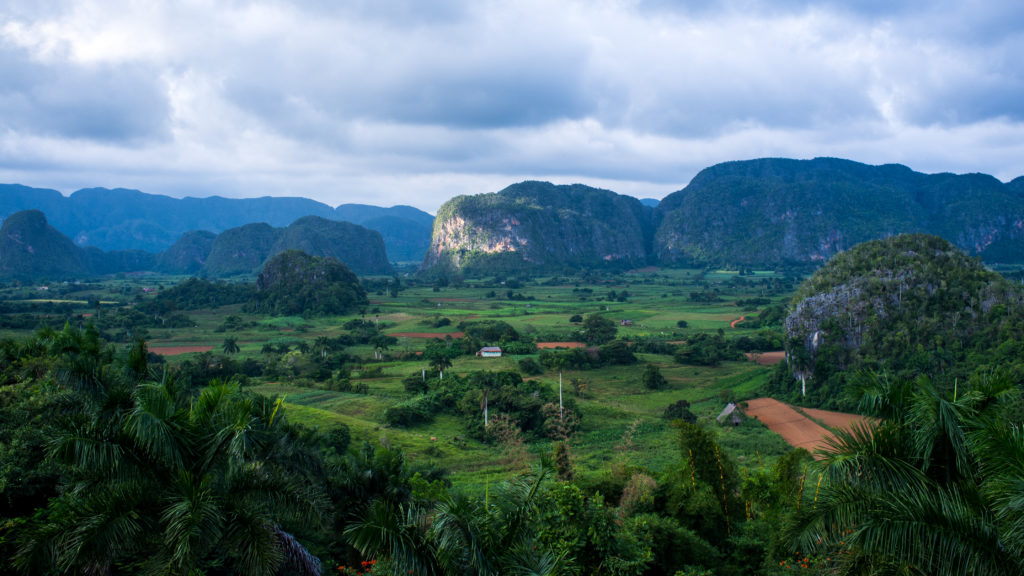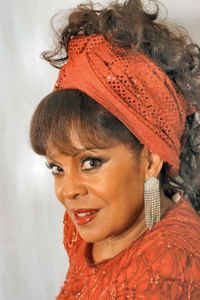 MIRIAM BAYARD, MUSICO, CANTANTE, ACTRIZ DEL TEATRO Y LA TELEVISON.
MIRIAM BAYARD, MUSICO, CANTANTE, ACTRIZ DEL TEATRO Y LA TELEVISON.
Miriam Bayard nació en la La Habana, Cuba un 7 de Diciembre de 1944 y es un musico, educadora y actriz de Teatro y Television, es ademas una talentosa y original cantante cubana.
Miriam Bayard se graduó como pedagoga de piano, solfeo y teoría, incorporada desde los inicios de su carrera profesional al Coro Nacional de Cuba y al Teatro Musical de la Habana.
La expresividad de Miriam Bayard es sugerente y convulsiona con ritmo tropical a quienes se encuentran situados en su proximidad. Ella tiene un carácter y una disciplina que la ha colocado en sitio de preeminencia entre los intérpretes de temas con dejo latino. Además de sus cualidades como artista e intérprete, Miriam Bayard reintrodujo en su patria, Cuba, el merengue dominicano tan en boga durante la década de los 50s., gracias a la presencia y actuación del imborrable vocalista dominicano Alberto Beltrán, antiguo cantante de la portentosa “Sonora Matancera”. De la misma manera Miriam Bayard, llevó a la sociedad cubana la sensualísima y provocativa “Lambada” baile que, fundamentalmente, es una mezcla de “Carimbó” y “merengue” que hizo furor en todo el orbe terrestre a mediados de la década de los 70s., y toda la década de los 80s.
La artista se distinguió desde sus inicios como vocalista y cantante profesional, en la garbosa provincia oriental de Santiago, ciudad donde “sintió gran atracción por la música que le deleitaban desde un balcón santiaguero un Miguel Matamoros o un Sindo Garay, que con sus trovas fascinantes entregaban serenatas a todos los corazones enamorados de la zona. Su inclinación hacia la música no estuvo errada, pues años más tarde se convertiría en una de las figuras más importantes de la música cubana”.
1980 fue una década prodigiosa para el arte musical latinoamericano. En cuba destacaban las voces de Elena Burke, Leonora Rega, Moraima Secada, Marta Strada, Rita Gil, Mirta Medina, Luisa María Güell y Lourdes Torres, mientras que desde el exilio Celia Cruz, Lupe Victoria Yolí Raymond “La Lupe”, Olga Guillot y Blanca Rosa Gil imponían su clase y estilo interpretativo en Puerto Rico, México, Estados Unidos, Nicaragua, Panamá, Colombia, Perú, República Dominicana y Venezuela.
Miriam Bayard después de haberse construido una sólida infraestructura cultural irrumpió exitosamente en 1981, inaugurando una nueva modalidad para interpretar el originalísimo “son cubano” y el “bolero romántico latinoamericano”. Ella, desde sus inicios obtuvo su espacio como solista en Cuba, audicionando en los cabarets “Tropicana”, “Copa Room” del Hotel Habana Rivera, “Hotel Capri” de la y “Hotel Nacional”, lugares de esparcimiento que congregaba a un turismo internacional que admiraba y se solazaba con la presencia de artistas de la dimensión de Miriam Bayard.
Ciertamente, Miriam Bayard ha renovado la buena música que se dejó escuchar en la década de los 20s., 30s., y 50s., añadiéndole creatividad dentro de un estilo único que ha recibido admiración y reconocimiento de los más exigentes públicos de España, Hungría, Rusia, Etiopía, Angola, Finlandia, Suecia, Canadá, Perú, Panamá, Nicaragua, Estados Unidos y México, país que le dio asilo.
Recientemente, con la colaboración de José A. Quintana y Hammadi Bayard publicó su más reciente CD que tituló “Cuando salí de Cuba”, obra de expresivo contenido latinoamericanista que resume según la ilustrada opinión de José Antonio Quintana Díaz, la vida artística de Miriam Bayard, cuando afirma expresamente que “es sinónimo de cubanía, sabrosura y son”.
 WWW.THECUBANHISTORY.COM — YESTERDAYS, TODAY, ALWAYS.
WWW.THECUBANHISTORY.COM — YESTERDAYS, TODAY, ALWAYS.
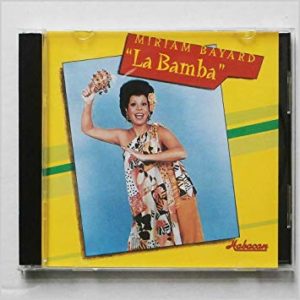 MIRIAM BAYARD, MUSICIAN, SINGER, THEATER AND TELEVISION ACTRESS.
MIRIAM BAYARD, MUSICIAN, SINGER, THEATER AND TELEVISION ACTRESS.
Miriam Bayard was born in Havana, Cuba on December 7, 1944, and is a musician, educator, and actress of Theater and Television, is also a talented and original Cuban singer.
Miriam Bayard graduated as a pedagogue of piano, solfege, and theory, incorporated from the beginning of her professional career to the National Choir of Cuba and the Musical Theater of Havana.
The expressiveness of Miriam Bayard is suggestive and convulses with tropical rhythm those who are located in its proximity. She has a character and a discipline that has placed her in a place of pre-eminence among the interpreters of topics with Latin desjo. In addition to her qualities as an artist and performer, Miriam Bayard reintroduced in her homeland, Cuba, the Dominican merengue so in vogue during the decade of the 50s, thanks to the presence and performance of the indelible Dominican vocalist Alberto Beltrán, former singer of the portentous “Sonora Matancera”. In the same way Miriam Bayard brought to Cuban society the sensual and provocative “Lambada” dance that, fundamentally, is a mixture of “Carimbó” and “merengue” that made a furor throughout the terrestrial orb in the middle of the decade of the 70s., And all the decade of the 80s.
The artist distinguished herself from her beginnings as vocalist and professional singer, in the oriental province of Santiago, where she “felt a great attraction for the music that a Miguel Matamoros or a Sindo Garay delighted him from a Santiago balcony, which with its fascinating songs They delivered serenades to all the hearts in love in the area. His inclination towards music was not wrong, because years later he would become one of the most important figures in Cuban music. ”
1980 was a prodigious decade for Latin American musical art. In Cuba the voices of Elena Burke, Leonora Rega, Moraima Secada, Marta Strada, Rita Gil, Mirta Medina, Luisa María Güell and Lourdes Torres stood out, while from exile Celia Cruz, Lupe Victoria Yoli Raymond “La Lupe”, Olga Guillot and Blanca Rosa Gil imposed their class and interpretive style in Puerto Rico, Mexico, the United States, Nicaragua, Panama, Colombia, Peru, the Dominican Republic and Venezuela.
Miriam Bayard, after having built a solid cultural infrastructure, successfully entered in 1981, inaugurating a new modality to interpret the original “Cuban Son” and the “Latin American Romantic Bolero”. She, from her beginnings, obtained her space as a soloist in Cuba, auditioning in the cabarets “Tropicana”, “Copa Room” of the Hotel Habana Rivera, “Hotel Capri” and “Hotel Nacional”, leisure places that congregated a tourism international that admired and rejoiced with the presence of artists of the dimension of Miriam Bayard.
Certainly, Miriam Bayard has renewed the good music that was heard in the decade of the 20s, 30s, and 50s, adding creativity within a unique style that has received admiration and recognition from the most demanding audiences in Spain, Hungary. , Russia, Ethiopia, Angola, Finland, Sweden, Canada, Peru, Panama, Nicaragua, United States and Mexico, a country that gave him asylum.
Recently, with the collaboration of José A. Quintana and Hammadi Bayard, he published his most recent CD titled “Cuando Salí de Cuba”, a work of expressive Latin Americanist content that summarizes, according to the illustrated opinion of José Antonio Quintana Díaz, the artistic life of Miriam Bayard , when he expressly states that “it is synonymous with cubanía, sabrosura y son”.
Agencies/ D’Cubanos/ Egly Colina/ Biografia/ Excerpts/ Extractos/ YouTube/ Internet Photos/ Arnoldo Varona/ www.TheCubanHistory.com
THE CUBAN HISTORY, HOLLYWOOD.

Ayer, Hoy, Siempre- www.THE CUBANHISTORY.COM-Yesterdays, Today, Always.



 < MIRIAM BAYARD, Musician, Singer, Theater and Television Actress. VIDEOS.
< MIRIAM BAYARD, Musician, Singer, Theater and Television Actress. VIDEOS.